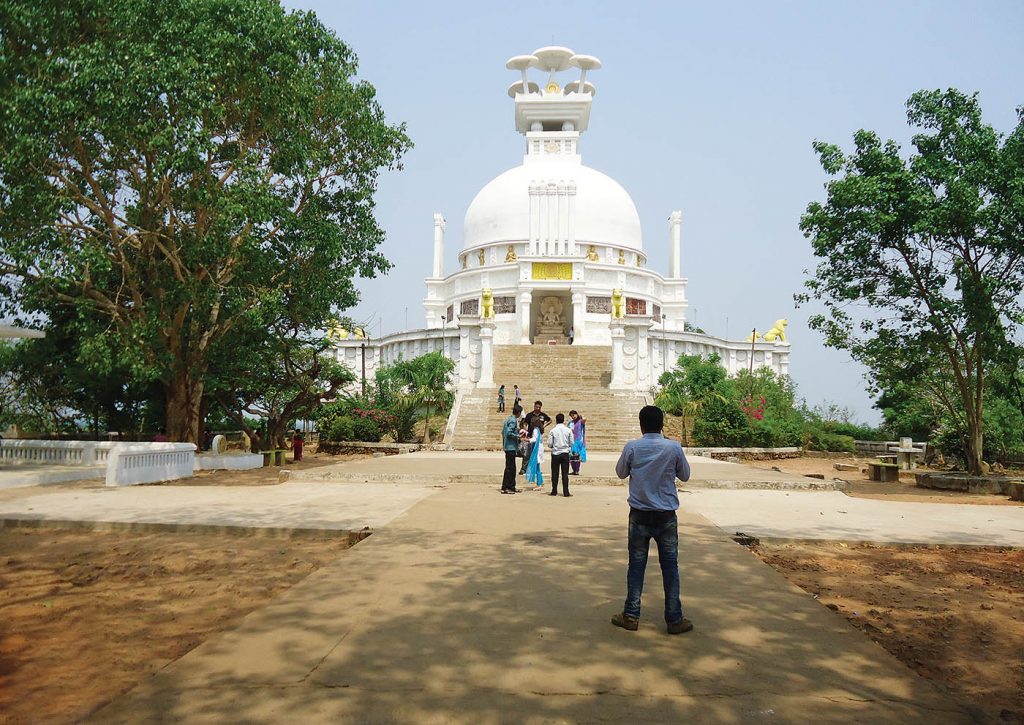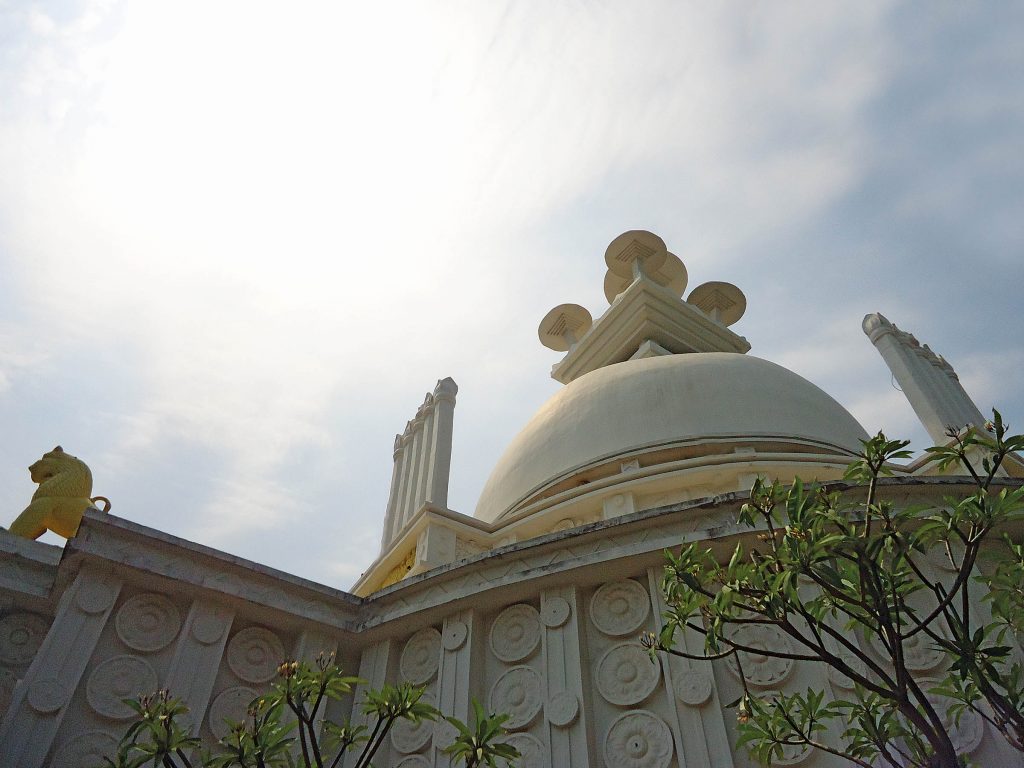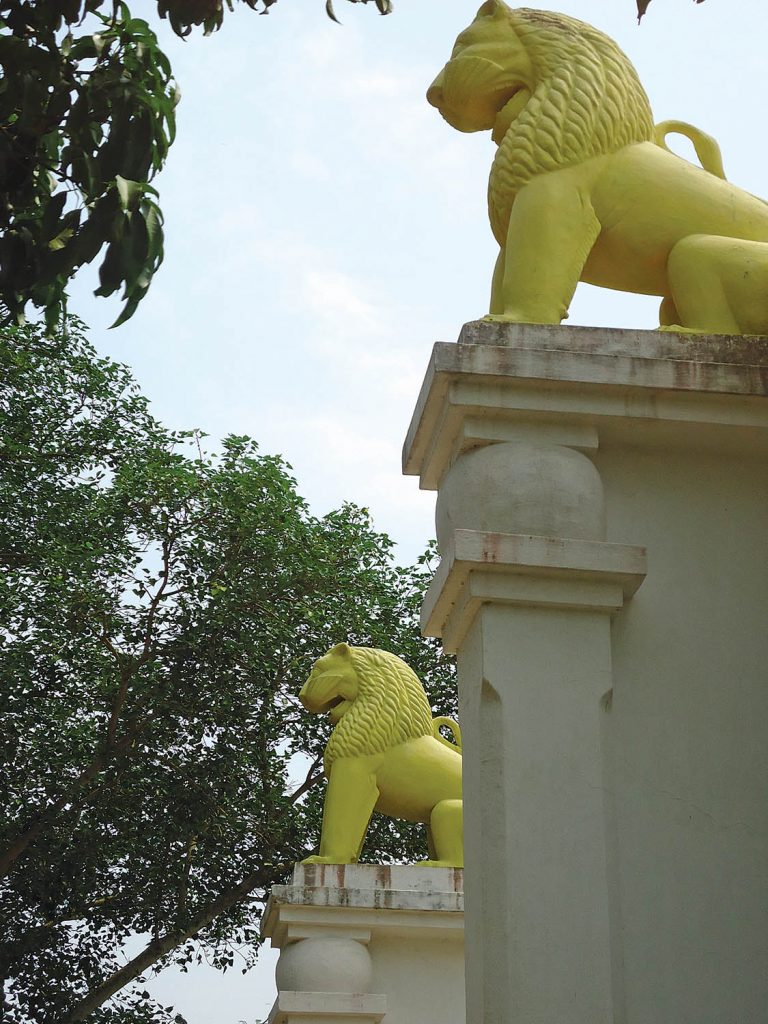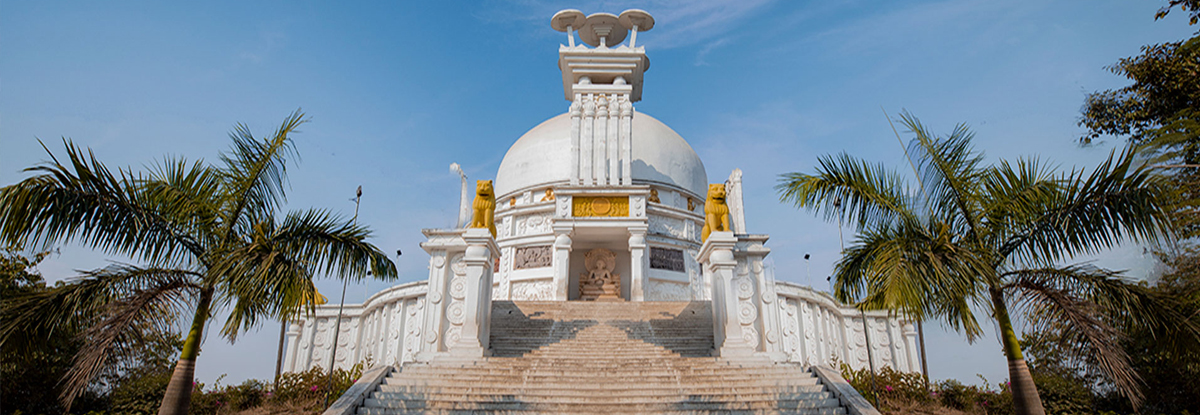Abode Of Peace
ODISHAʼS BUDDHIST PAST

From the banks of the river Daya, 8 kilometres south of Bhubaneswar, the Dhauli hills take on a singular enchantment at sunset. This region is presumed to be the arena for the Kalinga battle. All that remains today is a soft breeze whispering tales of an era long over and a scattering of rock edicts from Emperor Ashokaʼs time leading to the summit. The rock-cut elephant above the edicts is the earliest Buddhist sculpture in Odisha. The stone elephant shows the animalʼs foreparts only, though it has a fine sense of form and movement.

Ashoka had a special weakness for Dhauli, where the ruthless Kalinga battle was fought. The Daya Riveris said to have turned red with the blood of the many deceased after the combat, and enabled Ashoka to realise the magnitude of horror associated with war. He saw to it that Dhauli became an important centre of Buddhist activities and built several chaityas, stupas and pillars in this region. He also ordered that abodes be excavated for the recluse, instructions be inscribed for officials and expounded the main principles of Dandaniti for the protection and security of all humankind.

Today, centuries later, on the top of the hill, a dazzling white peace pagoda has been built by the Japan Buddha Sangha and the Kalinga Nippon Buddha Sangha in the 1970s. A bustling tourist spot visited by thousands from all over the country, the peace pagoda represents all that the Buddha had preached to his followers – the eternal message of concord and non-violence that needs to be reiterated again and again in our contemporary reality riddled with sectarian violence and war.

Glimpsing the enormous statue of the Buddha in meditation is a moving and humbling experience. The pristine white edifice has four gates with pillars pointing to the four directions guarded by lions. The premises exude a sense of calm, away from the bustle and noise of the city. Flowering frangipani trees add to the stupaʼs special aura as one bows oneʼs head in humility and softly whispers, “Buddhangsharananggachchaami…ʼ

